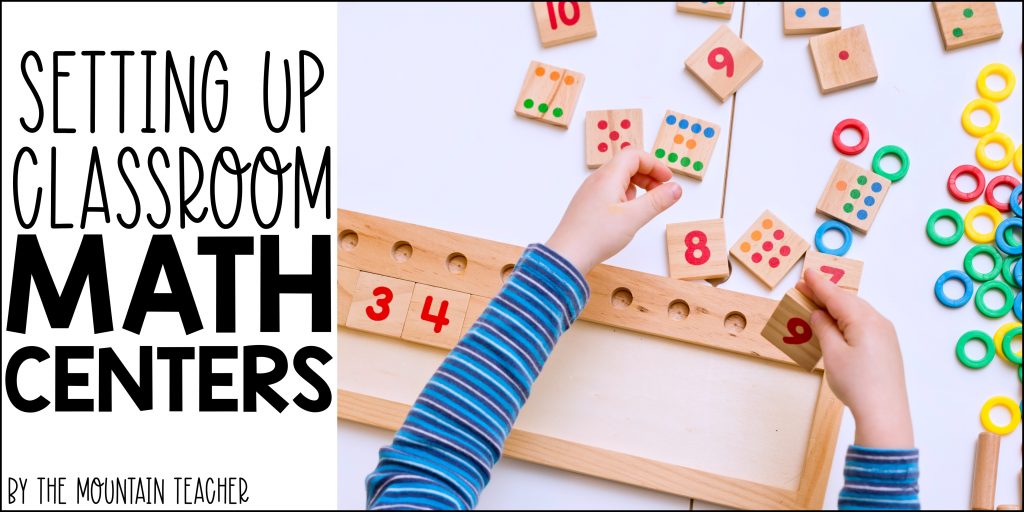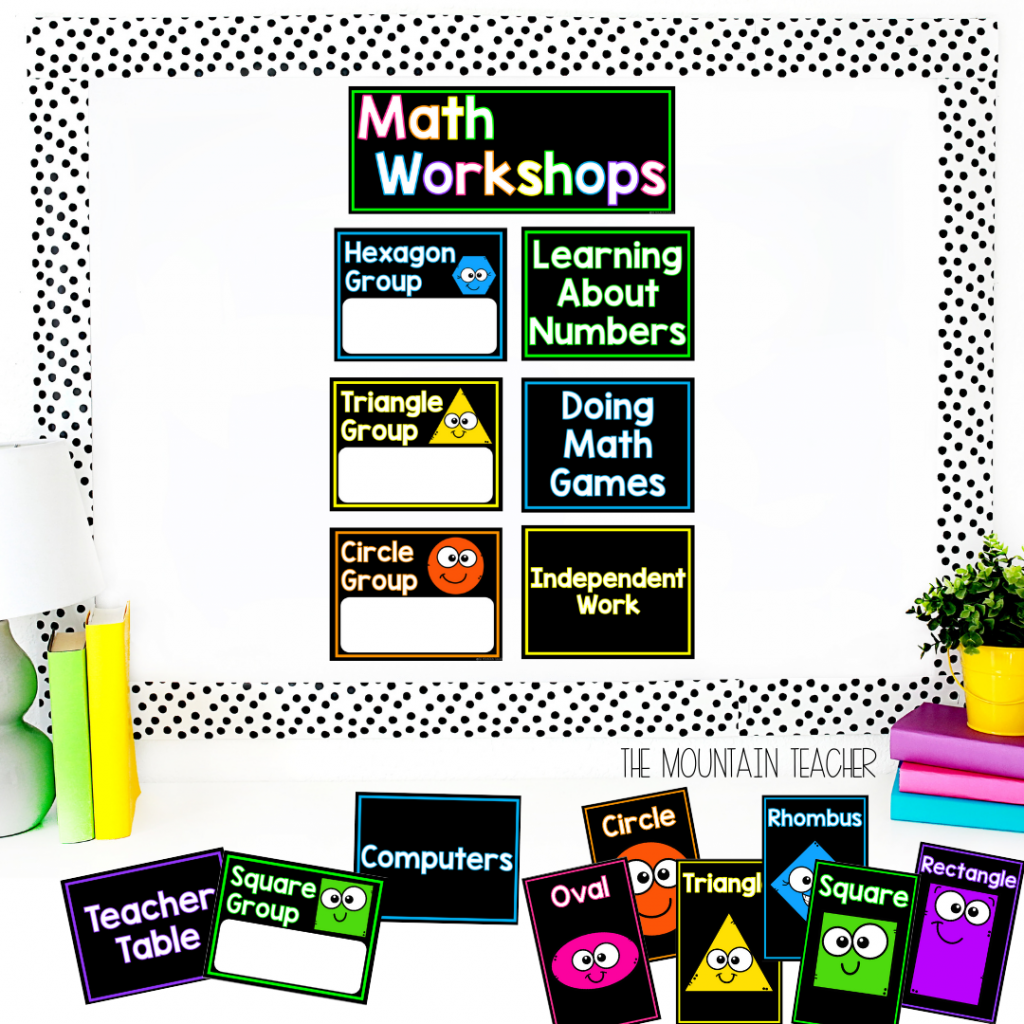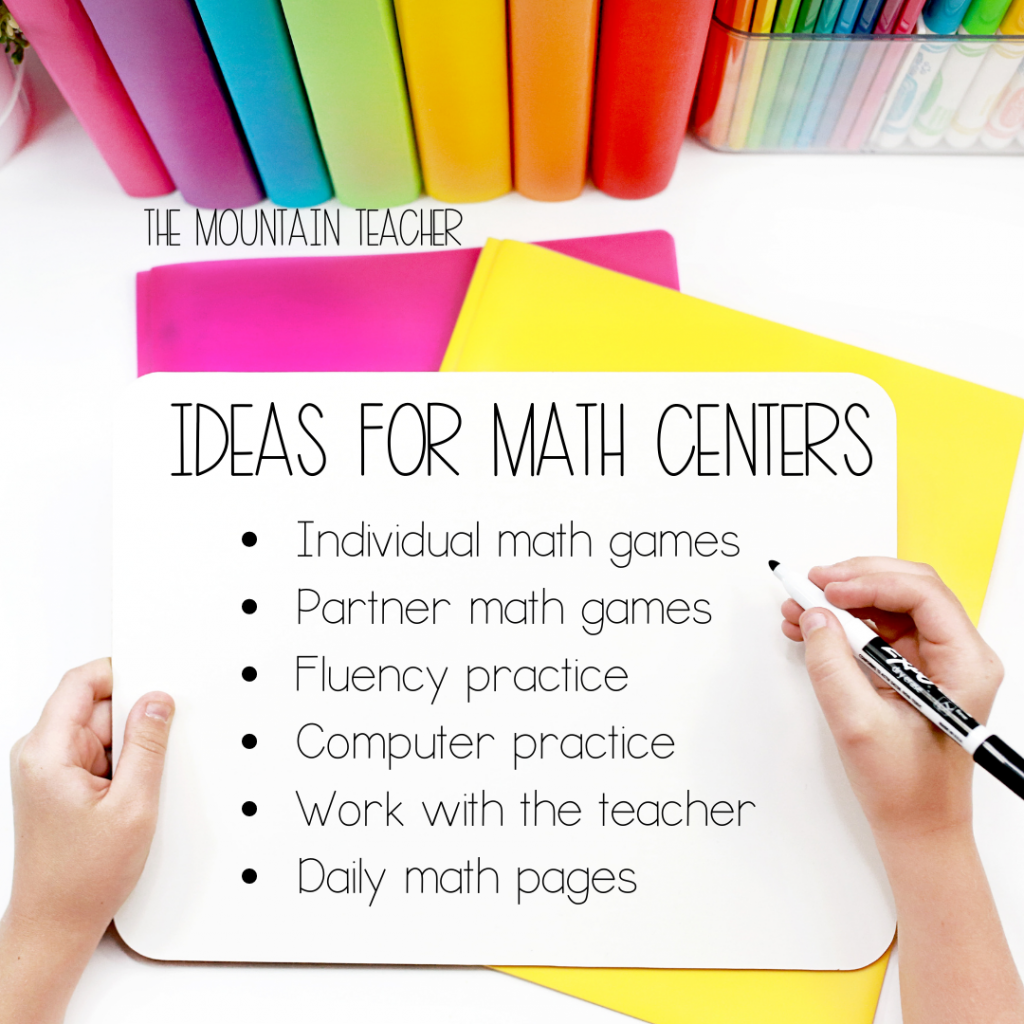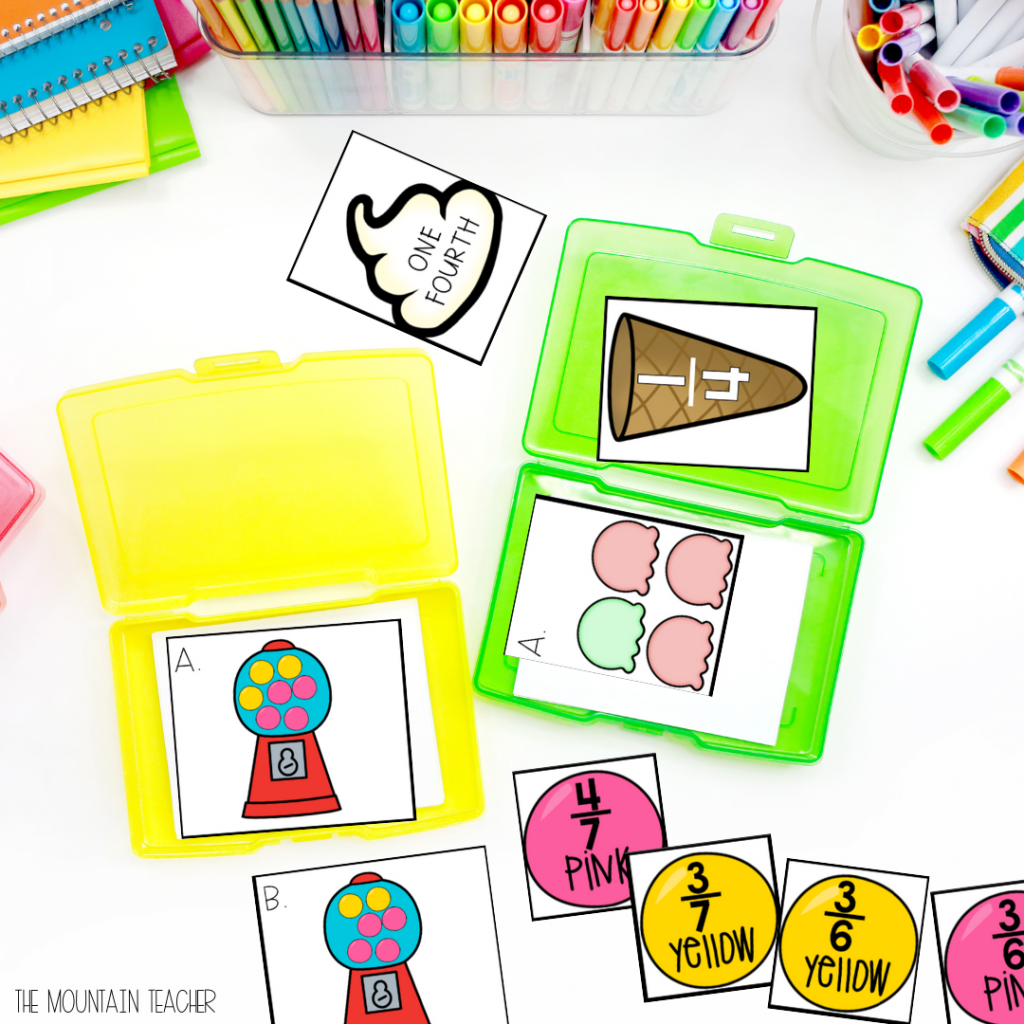Setting Up Practical Math Centers that Show Results

The school year is coming… are you feeling ready? Are your math workshops set up and ready to go?
Setting up elementary math centers can seem like a daunting task. Follow these simple tips below to help streamline your prepping process and make math workshops enjoyable for everyone.

Select a Style
When setting up your centers you have two choices: traditional math workshops where students rotate from one activity to another as a whole class, or doing dinner and dessert/must do vs. may do style.
The must do/may do style is a menu where students complete the necessary tasks and then can pick from any additional activity that you select.
There are pros and cons to both styles, and the choice is up to you. It can vary greatly depending on the class you have, however, I usually start with traditional centers at the beginning of the year and then make the switch at the end of the year to must do and may do.
This is because I feel like my students are more responsible by the end of the year and are better at managing their time.

Pick Your Activities
Usually, whether I am doing Must Do, May Do or traditional workshops, I have the same types of centers to pick from:
• Individual Math Games (printed math centers)
• Partner Math Games
• Fluency Practice (digital or printed)
• Computer Practice (BOOM, Prodigy, DreamBox, XtraMath)
• Working With The Teacher
• Daily Math Worksheet or Workbook
Usually, I pick between 4-5 activities that I want to have in my rotations throughout the year, but we might not do each one every day or during every unit.
I do like my students to do a daily worksheet or workbook page each day and fluency practice.
Fluency is always independent, and typically I have the students start and/or complete a workbook page at my back table. These two centers are “must dos” every day or always included in my rotations.
The other centers are the “fluff” where I add in spiral review. Because of that, I either change them up depending on what students need practice with, or based on what I am noticing.
If I notice the students are not doing great with computers or partner games, I will remove them from the options or rotations until students can show me they will be more responsible with them.

Now What?
Make sure you have a plan at EACH center for what students are supposed to do if they finish something. If they finish a center, do you want them to do another center? If they finish their worksheet, what do you want them to do?
Introduce One at a Time
During the first weeks of school, the entire class practices the same activity at the same time. We start with the easiest and it gets “harder” as we go.
I also think about what is the easiest for everyone to be practicing (worksheets or consumables) and what materials I have less of. The lesser materials go at the end of our agenda out of necessity.
For example, start by having the WHOLE class practice math fact fluency at the same time. Some ideas for fluency include: roll & solve problems, fact fluency pages, or digital math programs.
Start a timer and let students know how long they should be able to independently practice that skill.

Once students have mastered that, then I introduce independent math centers. To do this, I have most of the class work on fact fluency, while I pull small groups and go over how to play the independent math games. These are typically matching games, so we do one as a group, then I let each student practice individually.
I let every group have a turn (usually in one day, sometimes it takes two days to get through all the groups). After that, we add computers to the rotation as well. After computers are going well, we add any other skill I think is important, including buddy games, etc.
The very last center I add is working with the teacher. I make sure students are excelling at math centers before adding in the teacher table. This is VITAL because you want to make sure students know how to do centers perfectly before you start pulling groups. This is to prevent students interrupting your groups to ask questions that could have been addressed to the whole class.

Start Simple
Before the year starts, you will want to consider what skills you expect that your students already know.
For second grade, I assume most students are fairly fluent at adding and subtracting numbers to 20.
Therefore, most of my math centers for the first few weeks of school are practicing this skill and other basic first grade skills.
This allows students to focus more on learning routines and less on being overwhelmed or not understanding math concepts.
Consistency
Before students come, you will want to decide what things you think are a MUST each day, and what activities you want students to choose from.
You will want to keep it consistent for long periods of time, however, don’t be afraid to change things up mid-year if they are not working.
This does not mean the exact same materials all the time, but keeping concepts the same is important. For example, most math centers are some type of matching or sorting activities.
There are many to pick from that cover different concepts such as addition, subtraction, geometry, multiplication, money, time, etc. You can swap out the concepts, but be sure that the directions are consistent and in student friendly language.

You will also want to be sure that you are telling students when there is something new and giving them time to ask questions both before and after they play to avoid unnecessary interruptions.
Materials
If you are looking for year long and easy prep materials to make your 2nd grade math block run smoothly, check out my following favorites:
Final Thoughts
Remember, year after year, things will get easier and you will make changes that work better for you and for your students. Don’t be afraid to make mid-year changes if things are not working as well as you thought either.
If you are looking for more tips to get your elementary math classroom ready for success this year, be sure to check out my ultimate guide to setting up your math classroom.
What questions do you have about setting up elementary math centers in your classroom? Drop them in the comments below and I will be sure to reply! Happy teaching!
*Disclosure: I only recommend products I would use myself and all opinions expressed here are our own. This post may contain affiliate links that at no additional cost to you, I may earn a small commission.






